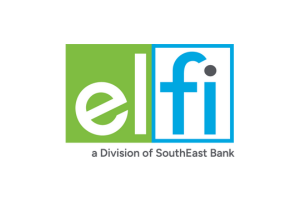Borrowers in the U.S owe $1.727 trillion in total student loan debt, according to Federal Reserve data for Q4 2023.
For borrowers with federal student loans, the average student loan debt in America is $37,056, according to the Department of Education's most recent data from Q4 2023.
Out of the total student debt, $1.602 trillion are federal loans, according to Federal Student Aid data for Q4 2023, and $130.28 billion are private loans, according to the Enterval Analytics Private Student Loan Report for Q3 2023.
Student loans have surpassed all other forms of debt in the U.S., aside from housing debt, according to data from The Federal Reserve Bank of New York. Therefore, getting a four-year Bachelor's degree or Master's degree and pursuing higher education can be costly.
Given the prevalence of student loan debt and the emergence of student loan forgiveness programs, we’re breaking down the average student loan debt as well as other student loan debt statistics for you to help you understand the student debt landscape.
Average student loan debt facts
Looking at student loan debt statistics can give context to the student loan crisis and the financial reality for college graduates — many undergrads with a Bachelor's degree and graduates with a graduate degree. You’ll learn how many people have student loan debt, how many are falling behind on student loan payments and more. Here are some of the overall statistics about student loan debt worth noting:
Average student loan debt facts (as of Q4 2023)
| Federal student loan borrowers: | 43.2 million |
| Average federal student loan debt: | $37,056 |
| Total student loan debt (private + federal): | $1.727 trillion |
| Federal student loan delinquency rate: | Less than 1% |
| Undergrad graduates with student loan debt: | 54.2% |
| Average student loan debt for a bachelor's degree for the class of 2022: | $21,566 |
According to the Federal Reserve's 2023 Q4 data, total student debt in the US stands at $1.727 trillion.
This stat comes from adding the latest stats on federal and private student loan debt together.
Keep in mind that this does not include borrowing from family or friends. Anecdotally, from our experience advising thousands of borrowers, this is a significant funding source for higher education.
Of course, the same borrower can owe federal and private student debt, so we cannot add the number of federal and private student loan borrowers in the same way.
TICAS, a nonprofit with years of experience in reporting student loan statistics, published data stating that the class of 2020 had average student debt levels between $18,350 to $39,950, which varied by state.
Student loan statistics by state
We calculated the average federal student loan debt for each state.
- State with the highest average student loan debt: Washington, DC, with $53,636
- State with the lowest average student loan debt: North Dakota, with $28,136
How many six-figure borrowers exist in each state?
Another way to look at the severity of the student loan crisis is to see what proportion of student loan borrowers owe more than $100,000 in student debt. Here’s the data below.
Student loan forgiveness

There are various different student loan forgiveness programs for federal student loan borrowers, such as:
- Income-Driven Repayment (IDR) plan forgiveness
- Public Service Loan Forgiveness (PSLF)
- Teacher Loan Forgiveness
- Total and Permanent Disability Discharge
These programs are still relatively new considering 2018-2019 was the first year that the original cohort of borrowers who pursued Public Service Loan Forgiveness was eligible for student loan forgiveness.
Let’s take a closer look at some of the recent data (as of June 2023) which includes information related to PSLF forgiveness under Traditional PSLF, TEPSLF and the PSLF Waiver.
Average student loan forgiveness facts (as of June 2023)
| Number of applications for PSLF: | 6,147,812 |
| Applications that have completed processing: | 3,997,781 |
| Applications approved by PSLF servicer: | 66,018 |
| Borrowers who had loans discharged: | 670,264 |
| PSLF applications rejected: | 174,002 |
| Total balance discharged through PSLF: | $46.768 billion |
| Average balance discharged through PSLF: | $69,776 |
If you want to go this route, be sure to complete your Employment Certification Form each year and see if your employer and type of loans qualify for PSLF.
PSLF application denial reasons
Much has been made of the 95%+ rejection rate for PSLF. But here are the top reasons why borrowers applying for PSLF have not been approved, as of June 2023.
When borrowers do not have enough qualifying student loan payments, they probably had nonqualifying Federal Family Education Loan (FFEL) loans during some of their 10-year repayment period.
Borrowers often fail to get signatures from employers or date their applications correctly.
Finally, borrowers sometimes apply with no eligible loans (i.e., loans under the FFEL program issued prior to 2010).
If you address these three rejection reasons, it's likely your application will be approved.
TEPSLF application denial reasons
Congress passed the Temporary Extended Public Service Loan Forgiveness (TEPSLF) program as an attempt to fix the problems borrowers were having with the PSLF program.
Naturally, the TEPSLF process initially has been more complex than PSLF because you first must apply for PSLF, get denied, and then apply for TEPSLF.
The U.S. Department of Education is simplifying this process currently. Here are the reasons borrowers get denied for the Temporary Expanded PSLF.
Student loan default and delinquency
According to the New York Federal Reserve quarterly report on Household Debt and Credit for Q4 2023, less than 1% of student loans are in default or 90+ days delinquent. According to a previous 2023 report, “Delinquency rates fell substantially in the previous quarter due to the implementation of the Fresh Start program, which made previously defaulted loan balances current.”
This number is down significantly from the previous data also due to the CARES Act, which was signed on March 27, 2020, changing reporting status requirements for forbearances.
Though billions of dollars are in default, the numbers are skewed heavily toward a lower debt demographic. You would think borrowers with a higher student loan balance may be more at risk for default, but that’s not the case.
Student loan default by debt size
The U.S. Department of Education's December 2019 data reveals delinquency rate statistics by debt size for Direct Student Loans.
This is the most recent data available. Because of the CARES Act, the reporting of delinquency information has been temporarily suspended.
| Debt size | Direct student loans in default (in billions) | Number of borrowers in default (in thousands) |
|---|---|---|
| < $5k | $1,458 | 514 |
| $5k to $10k | $3,938 | 543 |
| $10k to $20k | $9,579 | 673 |
| $20k to $40k | $17,933 | 625 |
| $40k to $60k | $14,188 | 290 |
| $60k to $80k | $11,223 | 163 |
| $80k to $100k | $6,852 | 77 |
| $100k to $120k | $15,662 | 116 |
| $200k+ | $8,862 | 32 |
| Total | $89,695 | 3,033 |
You'll notice the total number of borrowers in default is just over 3 million. That does not include FFEL defaulted debt and private student debt.
Almost 80% of borrowers in default on a direct student loan owe less than $40,000. Over one-third owe less than $10,000. Borrowers with higher balances (such as from graduate programs) clearly have better luck enrolling in an IDR plan.
It’s the borrowers who have smaller balances — those who may have associate’s degrees, bachelor’s degrees or who have dropped out — that are more likely to default.
Related: New Student Loan Forgiveness Strategy: A Guide for Small-Debt Borrowers
Borrowers with small debt balances and no degree are most likely to default
According to the New York Times, “Defaults are concentrated among the millions of students who drop out without a degree, and they tend to have smaller debts. That is where the serious problem with student debt is. Students who attended a two- or four-year college without earning a degree are struggling to find well-paying work to pay off the debt they accumulated.”
Additionally, graduate students may be more educated about the student loan process and pursue an IDR plan to avoid default. Borrowers/college students who dropped out or did not complete a degree may not be as familiar with such options.
These default student loan debt statistics, however, are misleading and can give the wrong impression.
Graduate programs get a pass on default rate monitoring
The federal government focuses exclusively on default rates to punish schools and sometimes looks at the percent of students paying down principal within three years.
But the government doesn’t monitor the default rate for graduate school programs at all. Grad students are generally more informed about repayment options and often sign up for IDR, which can help them avoid default. But it skews the numbers to make grad schools look like great investments.
When we think of the student debt crisis and immediately correlate high student loan balances with high default rates, we’re running against data that proves otherwise.
Student loan default by length
Delinquency and default are often confused. There is a technical difference between the two: you only need to miss your due date and monthly payments to become delinquent, and you enter default status after 270 days.
Below we cover how many borrowers are in current student loan repayment, including the student loan amount, then share the data related to delinquency and default at specific intervals.
As of Q4 2023, here’s how many Direct Loan and ED-held FFEL loans are in repayment status:
- Current Repayment: $1.037 trillion
- Borrowers in current repayment: 26.41 million
However, we have more limited data for delinquency. The most recent data available is from March 31, 2020 because the reporting of delinquency information has been temporarily suspended due to the CARES Act.
| Days delinquent | Amount delinquent (in billions) | Number of borrowers (in thousands) |
|---|---|---|
| 31 to 90 | $31.6 | 890 |
| 91 to 180 | $20.7 | 620 |
| 181 to 270 | $10.0 | 320 |
| 271 to 360 | $6.2 | 220 |
| Sent to collections | $1.6 | 60 |
| Total | $70.1 | 2,110 |
Deferment and forbearance
Deferment and forbearance options can help federal student loan borrowers avoid delinquency and default by putting student loan payments on a temporary pause.
Beginning in March 2020, there were major shifts in loan statuses as the CARES Act resulted in loan borrowers in repayment being moved into a forbearance status unless they opted out. However, here’s the most current forbearance and deferment data through Q4 2023.
Student loan deferment and forbearance (as of Q4 2023)
| Student debt in deferment: | $111.2 billion |
| Number of borrowers in deferment: | 3 million |
| Student debt in forbearance: | $55.5 billion |
| Number of borrowers in forbearance: | 1.2 million |
Federal student loan data
Many different types of federal student loans make up the federal student loan portfolio. We’re going to do a deep dive into the specifics regarding all the various types of loans as well as how many student loan borrowers have those types of loans.
This information is from Q4 2023, from the Federal Student Aid’s Loan Portfolio.
Direct Student Loans
- Outstanding Direct Loans: $1.413 trillion
- Direct Loan borrowers: 38.1 million
FFEL Student Loans
- Outstanding FFEL Loans: $185.4 billion
- FFEL Loan borrowers: 8.3 million
While those numbers are the general sums for those federal student loan categories, here are even more specifics by each loan type.
| Federal loan type | Dollars (in billions) | Borrowers (in millions) |
|---|---|---|
| Stafford Subsidized | $295.6 | 30.6 |
| Stafford Unsubsidized | $588.5 | 31.1 |
| Grad PLUS | $104.0 | 1.8 |
| Parent PLUS | $112.2 | 3.8 |
| Perkins | $3.6 | 1.2 |
| Consolidation | $498.3 | 9.8 |
Income-Driven Repayment

A good way to avoid delinquency and default — and to make loans more manageable is through one of the many IDR repayment plans.
Let’s take a look at the numbers as of Q4 2023:
| Federal repayment plan | Dollars (in billions) | Borrowers (in millions) |
|---|---|---|
| Income-Based Repayment | $148.3 | 2.46 |
| Income-Contingent Repayment | $42.3 | 1.00 |
| Pay As You Earn | $122.0 | 1.61 |
| Revised Pay As You Earn | $271.0 | 4.90 |
| Total | $583.6 | 9.97 |
Note that an additional 1.14 million student loan borrowers with $19.81 billion of student debt with a FFEL are on the Income-Based Repayment (IBR) plan. While FFEL loans are federal loans and part of Federal Student Aid, we did not include them in the table above because they are not Direct Loans.
Private student loan data
When it comes to statistics, most of the numbers are related to federal student loans. But the private student loan market isn’t exactly small. There are a significant number of student loan borrowers and private student loans.
Overall, as of Q3 2023, private student loans were estimated at $130.28 billion.
The following data is from the most recently available Enterval Analytics Private Student Loan Report:
Private student debt student loan balance by degree status
Private student debt balance by degree status (as of Q3 2023)
| Private student loan percentage for undergraduates: | 89.12% |
| Private student loan percentage for graduate students: | 10.88% |
Private student debt by repayment status
Private student debt by repayment status (as of Q3 2023)
| Private student loan in repayment: | 74.32% |
| Private student loan debt in deferment: | 17.97% |
| Private student loan debt in grace: | 6.33% |
| Private student loan debt in forbearance: | 1.35% |
Student loan debt statistics
As you can see from these student loan debt statistics, student loan debt is a concern for many people. Who it affects and how it affects them, however, varies greatly depending on the context.
As loan borrowers, what are your thoughts about these stats? Do any jump out at you as concerning or surprising? Let us know in the comments.
Melanie Lockert contributed to reporting for this article.
Refinance student loans, get a bonus in 2025
| Lender Name | Lender | Offer | Learn more |
|---|---|---|---|

|
$500 Bonus
Bonus for eligible users who refinance $100k or more (bonus from SLP, not SoFi)
|
Fixed 4.74 - 9.99% APR
Variable 5.99 - 9.99% APR with all discounts with all discounts |
|

|
$1,000 Bonus
For 100k or more. $200 for 50k to $99,999
|
Fixed 3.73 - 9.99% APR
Variable 5.88 - 9.99% APR
|
|

|
$1,000 Bonus
For 100k or more. $300 for 50k to $99,999
|
Fixed 4.25 - 10.24% APPR
Variable 4.86 - 10.24% APR
|
|

|
$1,050 Bonus
For 100k+, $300 for 50k to 99k.
|
Fixed 4.99 - 8.90% APR
Variable 5.29 - 9.20% APR
|
|

|
$1,099 Bonus
For 150k+, $300 to $500 for 50k to 149k.
|
Fixed 4.88 - 8.44% APR
Variable 4.86 - 8.24% APR
|
|

|
$1,250 Bonus
For 100k+, $350 for 50k to 100k. $100 for 5k to 50k
|
Fixed 3.99 - 10.08% APR
Variable 4.35 - 11.38% APR with autopay with autopay |
Not sure what to do with your student loans?
Take our 11-question quiz to get a personalized recommendation for 2025 on whether you should pursue PSLF, SAVE or another IDR plan, or refinancing (including the one lender we think could give you the best rate).

Comments are closed.